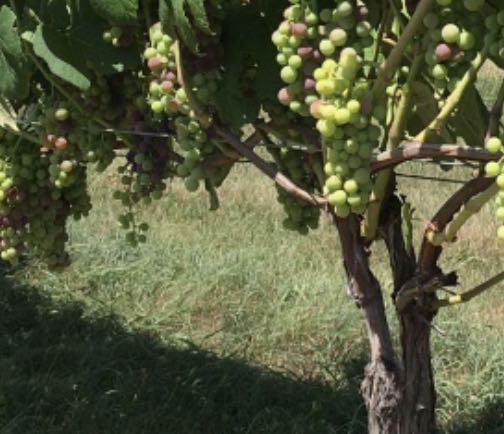Pruning and Training Grapes in the Home Vineyard (University of NH Extension)

Home-grown grapes make excellent fresh-eating, juices, jellies, raisins, and wine. A small home vineyard with even just a vine or two can be a beautiful and productive addition to the landscape, yard or patio. In this publication, we discuss the importance of pruning and training grapes.
We also describe some the training systems that can be used successfully in home vineyards.
Why prune and train grapevines?
Grapevines produce fruit on new growth each year. Because healthy vines grow several feet per year and would naturally set far more fruit than they can ripen, they must be pruned each year when they are dormant to keep the vines producing fruit and keep them from taking over an ever-increasing space. During the growing season, vines are trained to maintain a particular shape and to ensure that fruit is exposed to sunlight and airflow.
Vocabulary
Shoot – the current season’s growth (has leaves, tendrils, and fruit clusters)
Cane – a one-year old shoot(each bud on a cane produces a shoot)
Spur – a cane pruned to 1-3 budsTrunk –a permanent main stem that supports the fruit-bearing wood
Cordon –semi-permanent branches off of the trunkTrellis –the physical structure used as support for grapevines
There are countless named pruning and training systems for grapes used throughout the world. Some training systems are better suited to certain cultivars, certain climates, and certain uses, than others.
Some of the basic differences between training systems relate to:
1) whether fruiting shoots are borne on long canes that are replaced each year or whether they are produced from spurs on cordons that live for many years, 2) the height of the permanent trunks, which determines whether the fruiting zone is high (6-7 feet off the ground), low (3’ off the ground) or something in between, and 3) how the fruiting shoots are maintained throughout the growing season. The training system chosen determines the type of trellis that you will need.
In colder climates, cane-pruned systems are often better than cordon-pruned systems because they are less susceptible to winter injury. Similarly, shorter trunks are less likely to experience winterkill. We’ll discuss four systems that can work well and that are easy to implement in home vineyards in cold climates.

